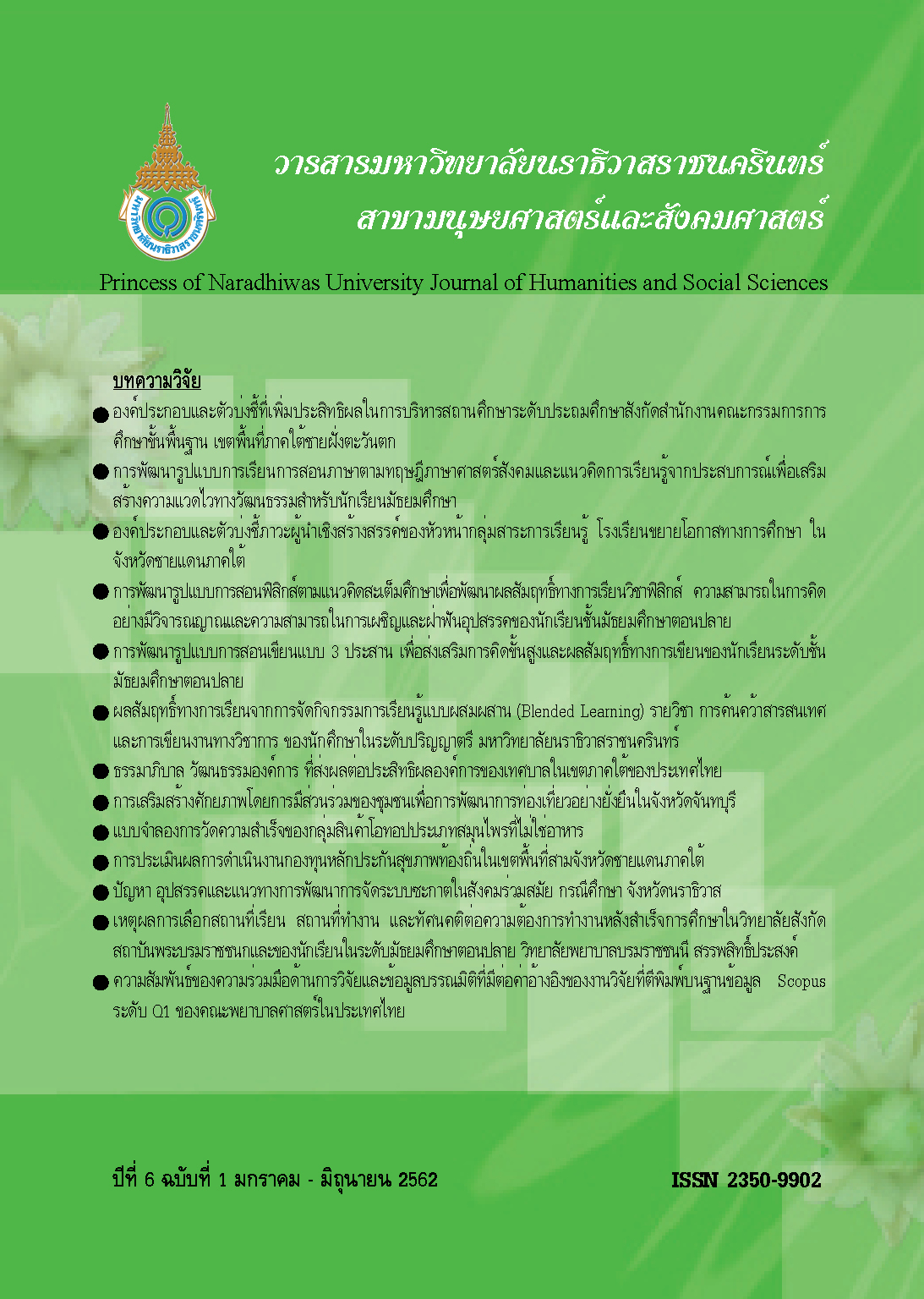Achievement Evaluation Modeling forNon-Food Herbal OTOPProducts
Main Article Content
Abstract
The purpose of this research was to study the current situation and the influence of factors affecting the success of Non-Food Herbal OTOP products and to create an achievement evaluation model using Structural Equation Modeling (SEM) based on the concept theory of Business Model CANVAS and Balanced Scorecard (BSC). Research design consists of both quantitative and qualitative method.Population is Non-Food Herbal OTOP Entrepreneur national wide and 600 selected sampling were selected from 4 regions included Northern, Northeastern, Central, and Southern regions, obtained by stratified random sampling. The questionnaire is created for quantitative process, whereas in-depth interview and focus group were used for qualitative processand the reliability coefficient of questionnaire as a whole was0.74.Statistics used in data analysis were percentage, mean, standard deviation and analyze data by using structural analysis equation (SEM) with LISREL software.
The research findings indicated that the factors of key partners and key resources were rated at a high level, while the factors of key activities, revenue streams, cost structure, customer segments, customer relationships, channels, value propositions, and operational achievement were rated at the moderate level. Based on the empirical study, 40 variables were used to measure thefactors influencing the success of OTOP products. The factors of cost structure, key activities, key resources, revenue streams, key partners, customer segments, value propositions, customer relationships, and channels had an influence on the operational achievement of non-food herbal OTOP products, respectively, at a .05 level of statistical significance. In addition, all the above-mentioned factors could be combined to predict the achievement of non-food herbal OTOP products with 90% accuracy. The research model developed can be used for self assessment of the Non-Food Herbal OTOP products. They can rapidly improvement, right direction investment and enhance competitiveness. In addition, the research result can be used for policy strategic development in order to promote the Non-Food Herbal OTOP products.
Article Details
References
กรมการพัฒนาชุมชน กระทรวงมหาดไทย. (2557). สรุปผลการดำเนินงาน โครงการลงทะเบียนผู้ผลิตผู้ประกอบการ OTOP ปี
-2558 .
ธันยมัย เจียรกุล. (2557). ปัญหาและแนวทางการปรับตัวของ OTOP เพื่อพร้อมรับการเปิด AEC. วารสารนักบริหาร
(executive journal), 34(1), 177-191.
นิศารัตน์ โชติเชย. (2556). ปัจจัยที่ส่งผลต่อความสำเร็จในการปฏิบัติงานด้านการผลิต สำหรับสินค้าหนึ่งตำบล หนึ่งผลิตภัณฑ์
ในประเทศไทย. วิทยานิพนธ์ปรัชญาดุษฎีบัณฑิต สาขาบริหารธุรกิจ. บัณฑิตวิทยาลัย มหาวิทยาลัยรามคำ�แหง.
พิมพ์พิสุทธิ์ อ้วนล้ำ, ชมพูนุท โมราชาติ และ กัญญา จึงวิมุติพันธ์. (2560). การพัฒนาศักยภาพการดำเนินงานกลุ่มหนึ่งตำบล
หนึ่งผลิตภัณฑ์ (โอทอป) ประเภทสมุนไพรที่ไม่ใช่อาหาร.วารสารมนุษยศาสตร์และสังคมศาสตร์ 8(2), 207-238.
Cosenz, F. & Noto, G. (2017). A dynamic business modelling approach to design and experiment new
business venture strategy. Long Range Planning, https://dx.doi.org/10.1016/j.Irp.2017.07.001
Haggege, M., Gauthier, C., & Rulling, C.-C. (2017). Business model performance: Five key drivers, Journal of
Business Strategy, 38(2), 6-15.
Joreskog, K. & Sorbom, D. (1996), LISREL 8: User's Reference Guide. Chicago, IL: Scientific Software
International Inc.
Kaplan, R. S. & Norton, D. P. (2008),The Executive Premium: Linking Strategy to Oprations for Competitive
Advantage, Harvard Business Publishing.
Mason, K., & Spring, M. (2011). The site and practices of business models. Industrial Marketing Management,
, 1032-1041.
Matzier, K.,Bailom, F.,Eichen,S. F.V.D.&Kohler, T. (2013).Business model innovation: coffee triumphs for
Nespresso. Journal of Business Strategy, 34(2), 30-37.
Osterwalder, A. &Pigneur, Y. (2010). Business Model Generation: A Handbook for Visionaries, Game Changers,
and Challengers. New York: Wiley.
Wiesnera, S., Padrockb, P., &Thoben, K.-D. (2014). Extended Product Business Model development in four
manufacturing case studies,Procedia CIRP, 16, 110-115.
Wrigley, C., Bucolo, S. &Straker, K. (2018). Designing new business models: blue sky thinking and testing,
Journal of Business Strategy, 37(5), 22-31.


